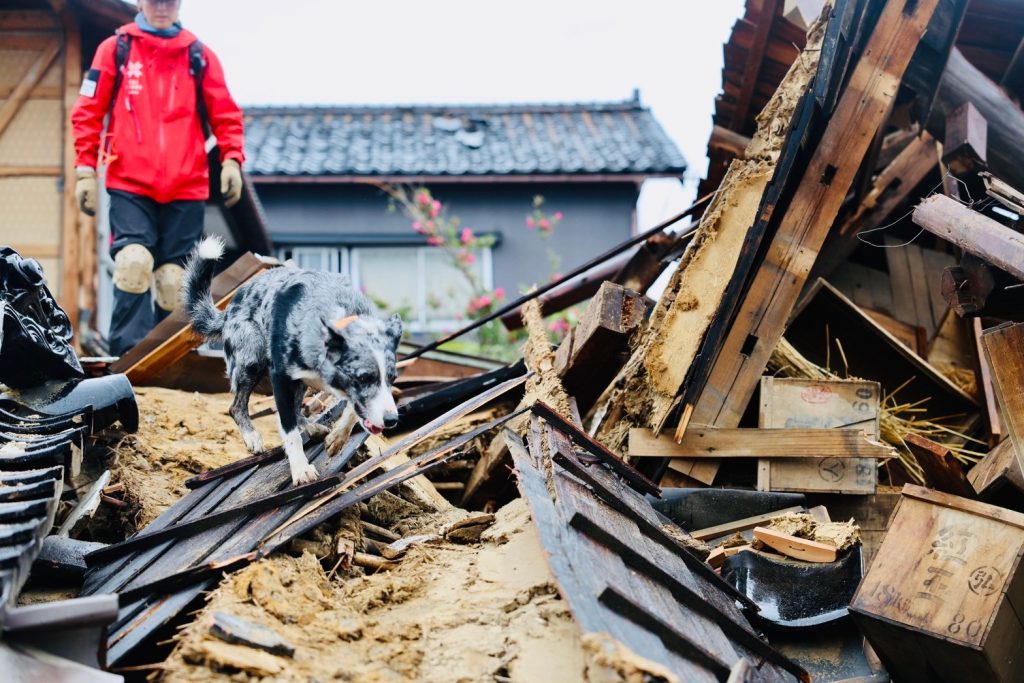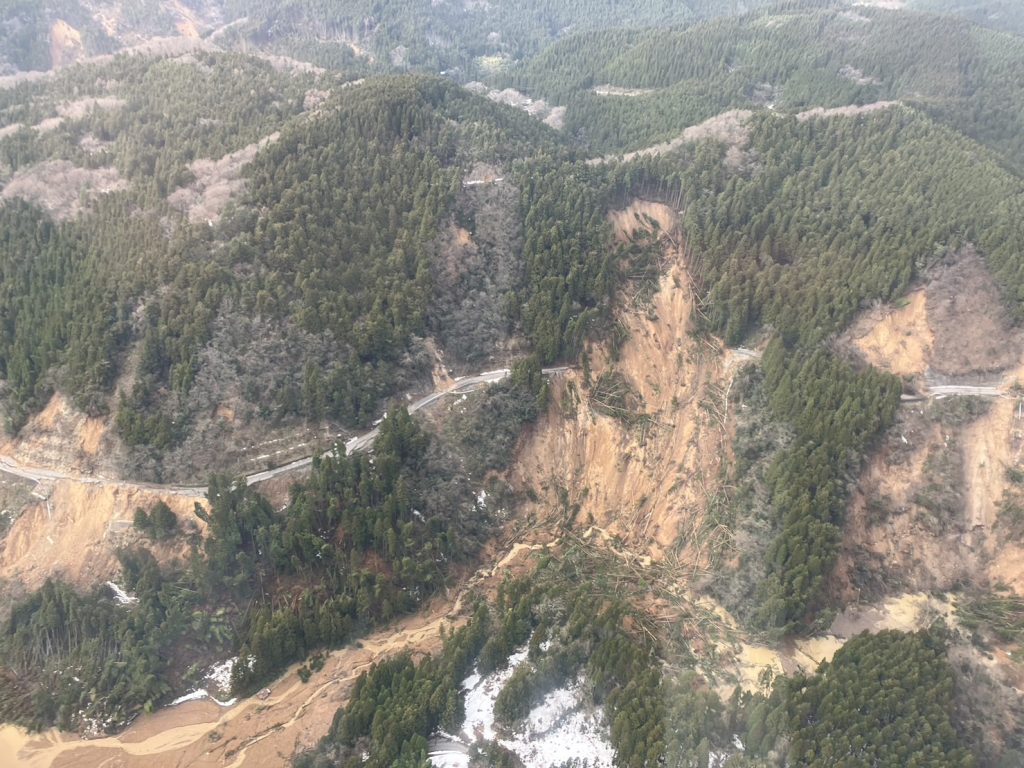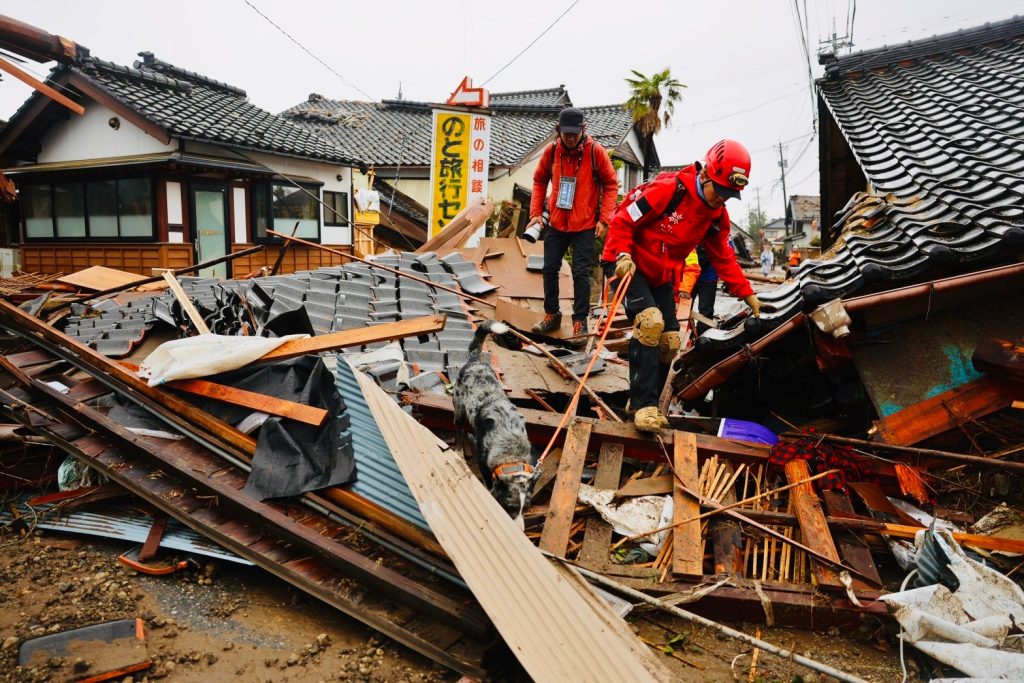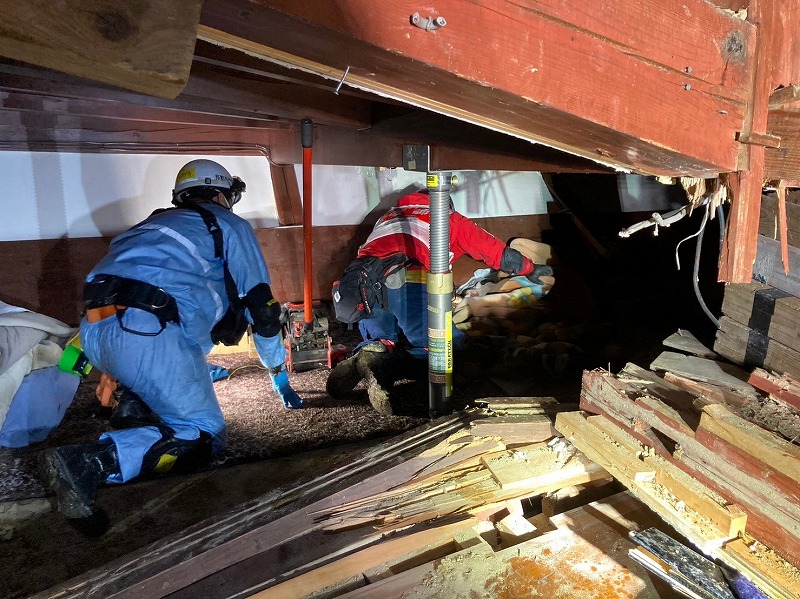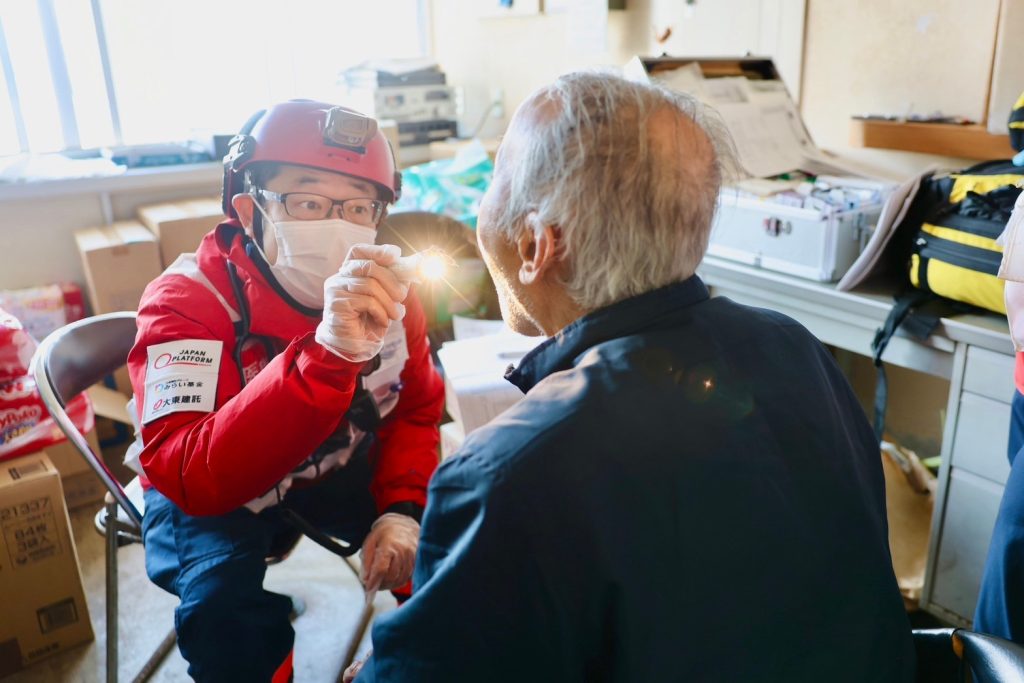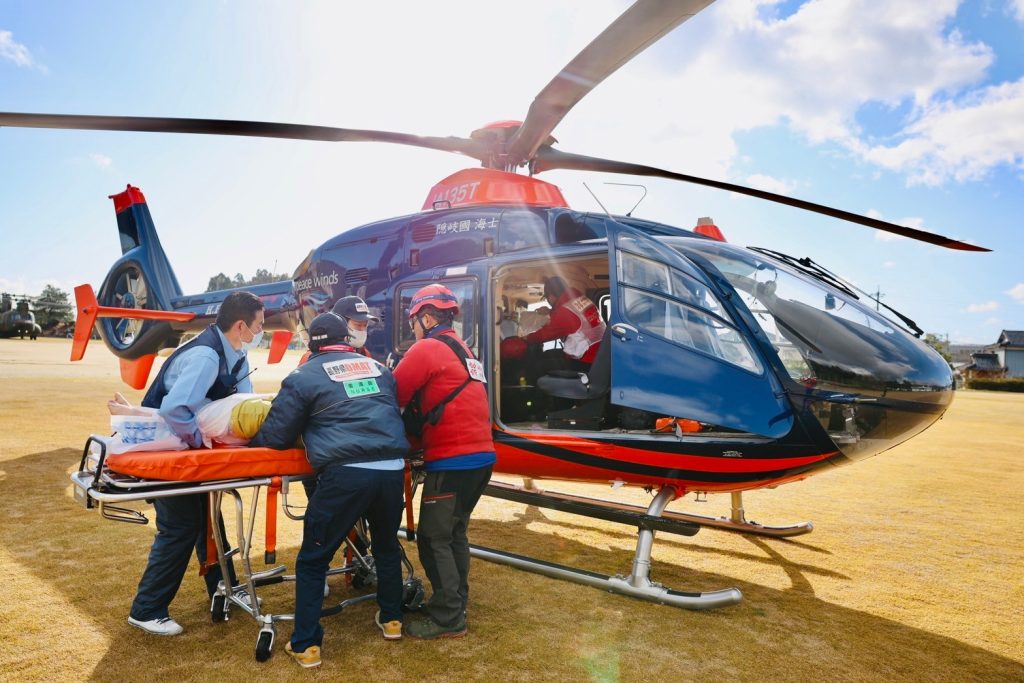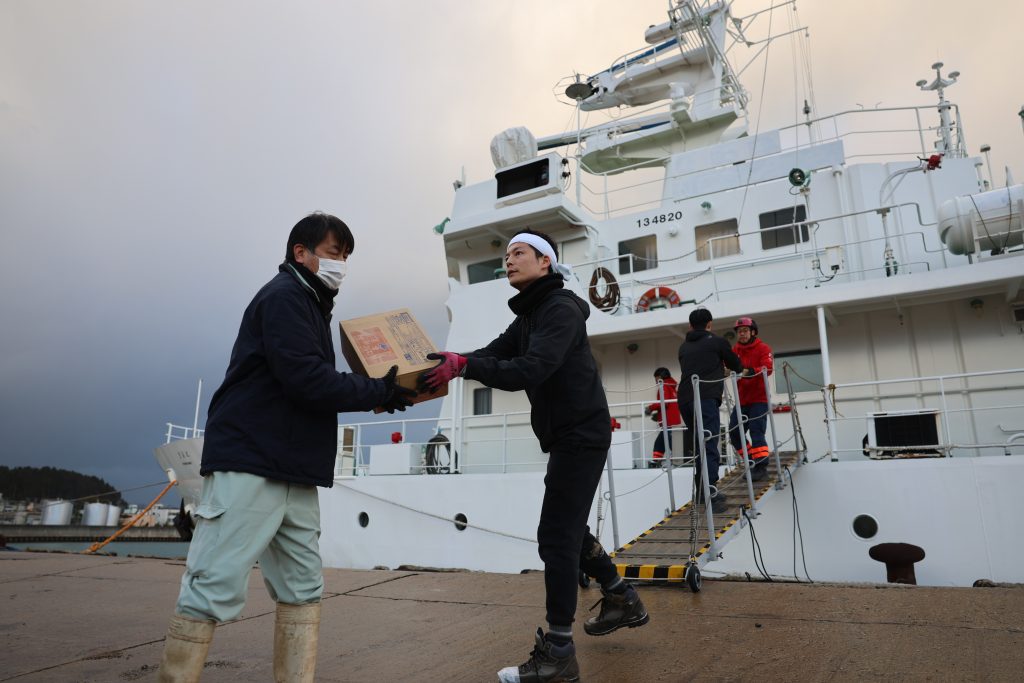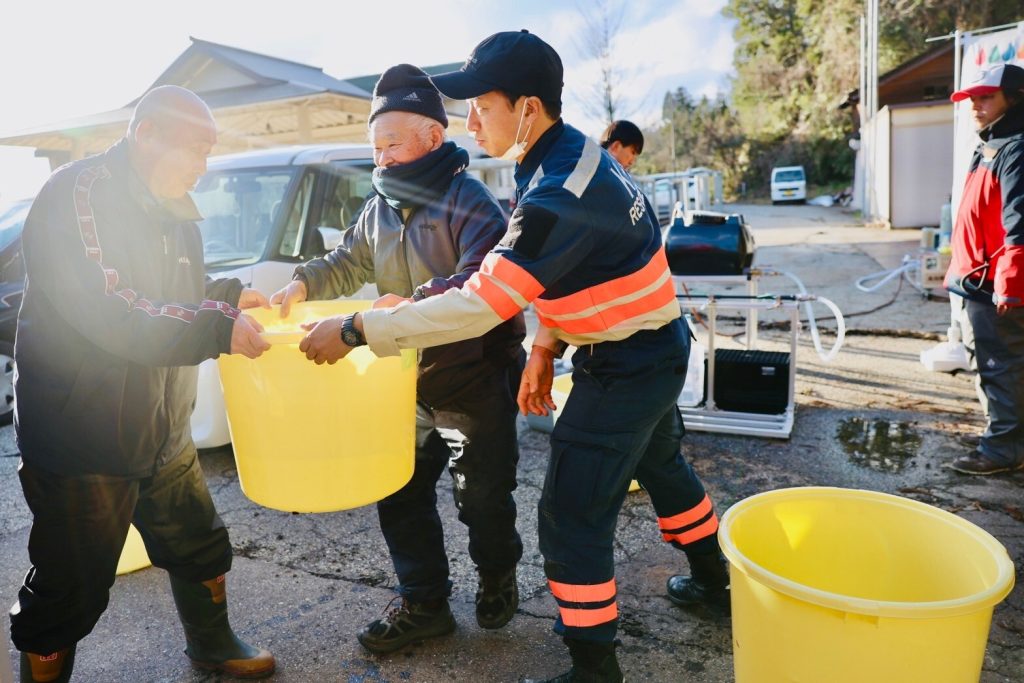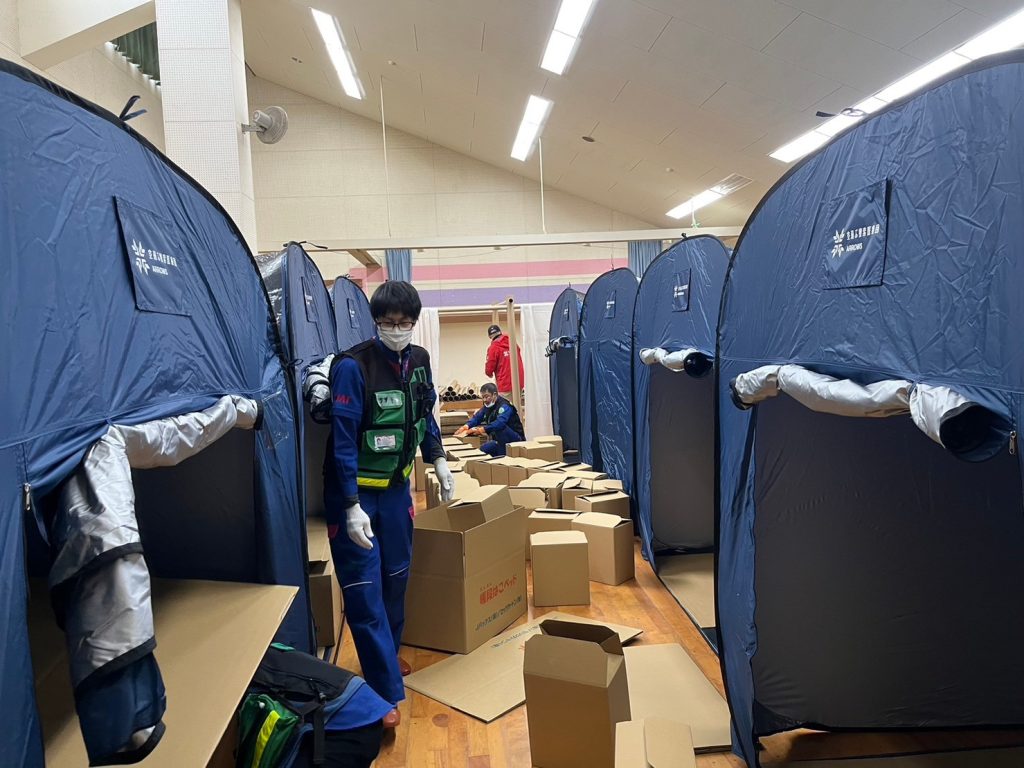One Month Since Japan’s New Year’s Day Earthquake
February 1 marks the one month anniversary of the New Year’s Day earthquake on Japan’s Noto Peninsula in Ishikawa Prefecture. As of today, 240 people have died, and 15 others remain missing. Fortunately, the situation in the disaster zone is stabilizing, including a widespread restoration of power to homes that have been without it for weeks. However, thousands of people remain displaced, and the process of recovery and rebuilding will be a long one for the Noto community.
Over the last month, Peace Winds’ airborne search-and-rescue team, ARROWS, has been on the ground providing emergency aid in and around Suzu City. Our staff have noted a number of unique challenges that make the response here particularly difficult. For example, the majority (52%) of Ishikawa Prefecture’s population is elderly (65 years and older). Those with declining physical and mental health require extra care. Fortunately, many ARROWS staff specialize in caring for the elderly, and Suzu City maintains a strong sense of community where residents support one another.
Additionally, even Peace Winds’ seasoned disaster professionals have been surprised by the extent of the damage in Ishikawa Prefecture. Homes, businesses, and infrastructure have been damaged or completely destroyed, and many rural villages were cut off from the rest of the region. Staff say they are surprised but thankful that the death toll is not higher.
Despite the challenges, Peace Winds is working hard to meet the needs of earthquake survivors. Over the last month, teams on the ground have supported emergency relief in a number of ways:
- Immediately following the earthquake, our staff aided local search-and-rescue efforts with the help of ARROWS’ search-and-rescue dogs. On January 6, Peace Winds’ Dr. Mototaka Inaba and other ARROWS team members even played a central role alongside other responders in the “miracle” rescue of a 90-year-old woman who had been trapped in a collapsed home for more than 120 hours. Her survival became a symbol of perseverance for a region in need of hope.
- Medical care has been a crucial necessity for the Noto Peninsula, both in the short term and in the weeks following the earthquake. ARROWS helicopters played a central role in airlifting patients, and doctors and nurses have been providing health checks to survivors living in evacuation centers. Patients can also see ARROWS doctors for health checks at mobile clinics, and house calls are available for the elderly and disabled. Peace Winds is working with a mobile pharmacy so that patients can easily get prescriptions–something that has brought peace of mind to the many people who left medications behind when evacuating their homes.
- Peace Winds has played a central role in delivering supplies to the Noto Peninsula’s earthquake survivors. This includes food, water, and hygiene and baby items. While the damage to roads has made supplies delivery difficult, Peace Winds’ helicopters and its ship, the “Toyoshima Maru,” have been an invaluable asset for airlifting patients and delivering supplies, equipment, and personnel where large trucks and ambulances cannot reach.
- Damage to water and gas lines created additional challenges over the last month, especially in the northern part of the Noto Peninsula. Peace Winds has been distributing clean water thanks to its water purifiers, and the Toyoshima Maru is transporting heating oil and other fuel to Suzu and other communities.
- Finally, Peace Winds has been aiding in the operation of evacuation centers. This includes registering evacuees, setting up tents, delivering and stocking supplies, and planning the layout of the centers according to each resident’s needs. Last week, ARROWS staff aided in transitioning evacuees from a high school to a nursery school when the high school reopened to students.
Peace Winds is working to assess the long-term needs of survivors, and we are committed to maintaining our presence in the weeks and months ahead. Future recovery efforts will likely include support for mental health and medical care, economic revitalization, and community-building activities.
Peace Winds would like to extend our deepest gratitude to everyone who has donated, sent thoughtful notes, and started their own fundraisers in support of our GlobalGiving project. We are truly humbled by the initiative of people around the world to host fundraisers–from high school and college students in the U.S. and Japan to Japanese rockstar Nano. It means so much to our teams in Japan and around the world to see our followers coming together in support of a community in need. Peace Winds would not be able to carry out our relief efforts without your kindness and generosity.
We especially want to thank the United States-Japan Foundation for generously matching all donations up to $25,000 made through their fundraiser.
If you have not yet made a donation and would like to do so, please click the links below. New donations to Peace Winds’ “Japan Disaster: Relief and Recovery” project will go toward relief and recovery activities in Ishikawa Prefecture as well as broader disaster preparedness efforts. We are grateful for your continued support.
To support Peace Winds’ emergency response:
Click here to donate from outside of Japan through GlobalGiving
Click here to donate from inside Japan through Yahoo Fundraising
For more information on the Peace Winds response and corporate/foundation contributions, please contact us at info@peacewindsamerica.org
